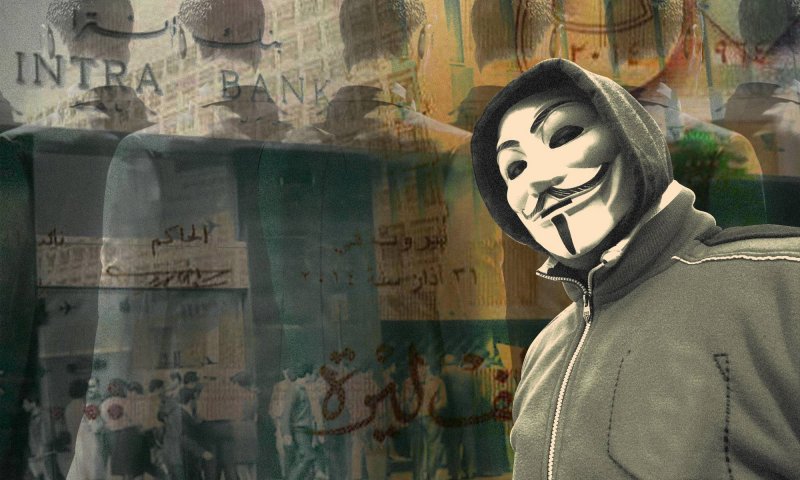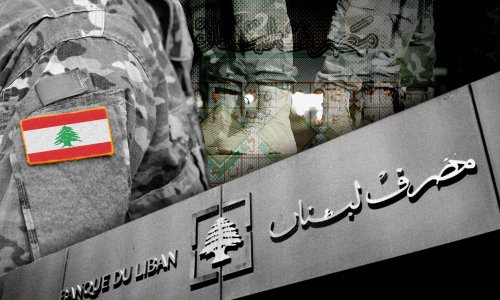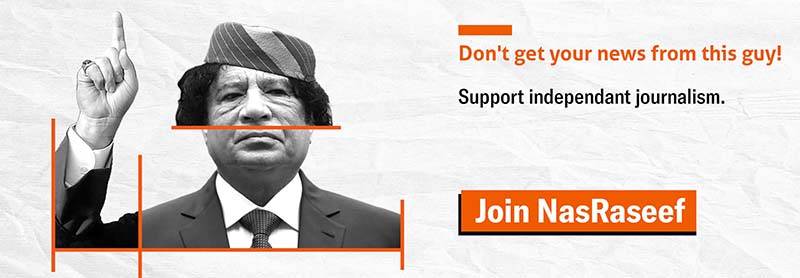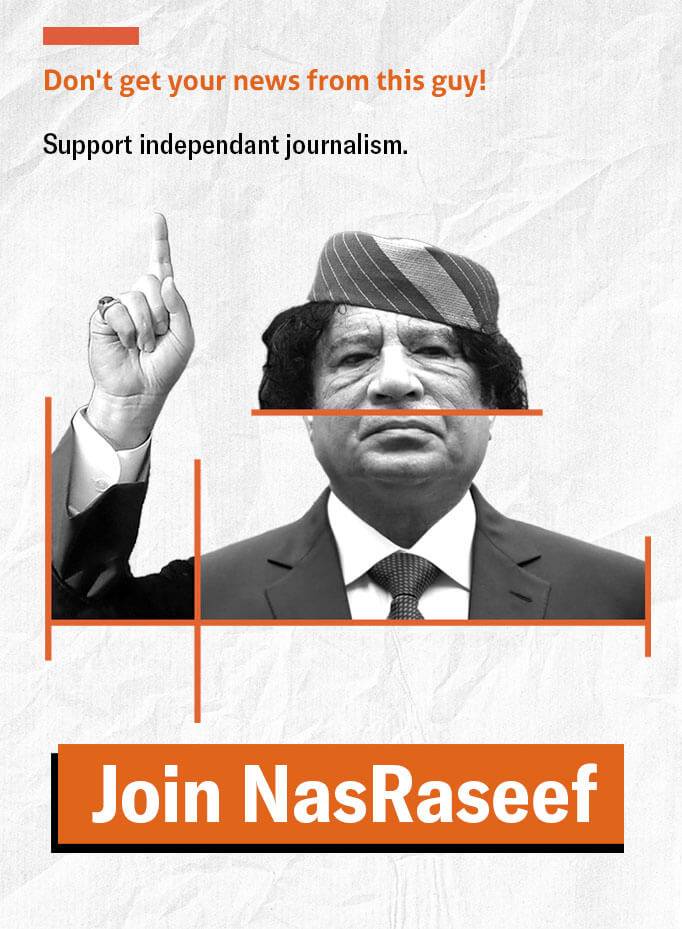In 1948, a thirty-six-year-old Christian man from Jerusalem named Yusuf Beidas left Palestine for Lebanon. By 1951 he was operating a money exchange business from a room in Ras Beirut. That money changing business was soon to become Intra Bank. Thanks to Beidas’s financial acumen, Intra became the largest bank in Lebanon, controlling an estimated 17% of all banking assets by the mid-sixties. The bank held 19,000 depositor accounts. It also controlled Compagnie du Port de Beyrouth, Middle East Airlines, Casino du Liban, the Societe des Grands Hotels du Liban (the owner of the Phoenicia Hotel), and other major Lebanese companies.
Intra expanded aggressively outside of Lebanon as well. It opened offices in a dozen locations abroad, including global financial centers; London, Paris, New York, and Switzerland; in other Arab states such as Jordan and Qatar, and far-flung locations with significant Lebanese expatriate communities, like Sierra Leone and Brazil. It was the controlling shareholder in the French military naval shipyards at La Ciotat and owned a number of prestigious properties on the Champs-Élysées in Paris and on New York City’s 5th Avenue.
Despite Intra’s seemingly rude health, rumors began to circulate in the autumn of 1966 that it was insolvent. It seems that this was an exaggeration. Though Intra’s accounts were not in great shape, it was not on the brink of collapse. But the majority of depositors did not have accurate information on the reality of the bank’s situation and they did not wait for confirmation of their fears. A run on the bank ensued, which quickly exhausted its supply of cash. On October 15th, 1966, Intra stopped paying out deposits and closed its doors.
Lebanon’s Central Bank could have saved Intra Bank in 1966 by extending liquidity to the nation’s leading bank, it did not. 54 years on, the still ill-defined role, function, and governance of the Central Bank led to the calamitous collapse of a nation
Scenes that would be familiar to Lebanese in 2020 ensued. Long lines of irate clients formed outside Intra branches. Tempers flared and police had to break up fights. One elderly lady, fearing that she had lost her life savings, tore the clothes from her body and ran around naked in front of an Intra branch until police booked her. There were serious fears that clients would lose confidence in other Lebanese banks as well, leading to mass withdrawals and a collapse of the entire banking sector.
Facing charges of financial misconduct, Beidas fled to Brazil. By 1968 he had died of cancer in Switzerland. Intra would undergo a radical restructuring before re-opening, but it never achieved its previous glory.
The collapse of Intra Bank was caused by a combination of political and economic factors. While the political background of the collapse remains somewhat mysterious to this day, the economic factors that led to the crisis are quite clear. Beginning in 1964, an increased demand for dollars in the European financial markets resulted in an increase in the interest rates on so-called Eurodollar bonds, that is, bonds denominated in US dollars, but traded in Europe.
Like banks everywhere, Lebanese banks invested their dollars in Europe to take advantage of the increased interest rates on Eurodollar bonds. Because they had sent their dollars abroad, Lebanese banks then found that they were low on liquidity (that is, in slightly simplified terms, the cash they had available to pay out to customers).
Lebanon's cabinet went to great lengths to hide the fact that Intra Bank was solvent and could have been saved. Price Waterhouse was hired to audit Intra, but was fired when it allegedly discovered Intra’s assets exceeded its liabilities
Naturally, banks everywhere move their money to the financial markets where they can get the best returns. The situation in Lebanon was different from other countries, because in the mid-sixties, there was no meaningful regulatory oversight of Lebanese banks. Lebanon did not even have a central bank with regulatory powers until 1964. Before that date, the commercial Banque du Syrie et Liban printed money and held government accounts. The Banking Secrecy Act of 1956 further limited the scope for financial oversight.
The Monetary Law of 1963 established the Banque du Liban as a central bank with wide ranging, if vaguely defined, regulatory powers, but the consensus among the political and financial elites was in favor of light-touch regulation. In practice, the national bank did not interfere in the financial operations of commercial banks.
This meant that there were no limits on how low Lebanese banks could take their liquidity in order to free capital to invest abroad. As a result, the banking sector as a whole (and not just Intra) sent so much money abroad that it did not have sufficient cash to cover deposits. In more tightly regulated banking markets, this would not have been possible.
Perhaps Intra was more exposed to the liquidity crisis than other Lebanese banks, because a large part of its capital was tied down in assets that could not be quickly converted into cash. These non-liquid assets included investments in prime European real estate and shares in corporations such as Middle East Airlines and Casino du Liban. nevertheless, the economic conditions that led to the Intra crisis affected all Lebanese banks, and, therefore, macroeconomic factors alone were not the cause of Intra’s collapse.
In fact, it was the Lebanese political and economic elites that went to great lengths to destroy Intra. On a basic level, they knew that Intra, like all Lebanese banks, was going through a liquidity crisis. This meant that if many depositors started withdrawing their cash at once, the bank would not have enough cash available and would find itself in deep trouble, so they worked to intentionally start a run on Intra. Later, after October 15th, 1966, when Intra closed its branches, they conspired to deny it a short-term loan from the Banque du Liban, which would probably have saved the beleaguered bank. At the same time, they granted a similar loan to all other banks threatened by the banking crisis, preventing any other banks from collapsing.
Several individuals associated with the bank have given differing accounts as to how exactly the run on Intra was organized. Beidas himself claimed that members of the Lebanese elites orchestrated a campaign that included calls and visits to hundreds of Intra’s account holders in the days prior to its collapse, encouraging withdrawal of deposits.
In his memoirs, Beidas’s brother-in-law and head of Intra’s New York branch, Yusuf “Joe” Salameh, gives a similar account. According to Salameh, in the Fall of 1966, before Intra’s problems became apparent, Intra’s leadership approached President Charles Helou asking him to request from the Banque du Liban a short-term loan to cover Intra’s liquidity shortfall. The deputy director of the Banque du Liban, Joseph Oghoulian, whom Helou contacted, refused the president’s appeal on behalf of Intra with the justification that requesting such loans was outside the authority of the president. Having thus learned of Intra’s problems from the president himself, Oghoulian then went on to spread the word about the problems far and wide, precipitating the crisis.
Another account claims that in the weeks before the closure of Intra, when it was clear the bank was in trouble, but it was not yet clear it would collapse, the Banque du Liban reportedly agreed to extend a limited line of credit. The collateral for the line of credit were to be stock and bond certificates held by Intra. They were to be physically deposited in the central bank. The leadership of the central bank intentionally had the stocks and bonds delivered through the central bank’s main entrance during business hours. They were counted and registered in the foyer, in full view of all bank employees. The employees figured out what was going on and spread the rumors of Intra’s problems.
After Intra Bank closed its branches on October 15th, its leadership still believed that it could be salvaged without too much trouble. The bank’s leadership was, after all, familiar with the actual state of the bank’s assets, which exceeded its liabilities. What they needed was a cash injection to tide them over until some of those assets could be sold. The Banque du Liban would have been able to provide such a cash injection, as was demonstrated in the following weeks, when it did exactly that for all of Lebanon’s other struggling banks, except Intra.
Why Lebanon’s elites decided to destroy Intra Bank is not exactly clear. One common theory emphasizes the fact that Beidas was a Palestinian. This was said to irritate the traditional Lebanese banking elites who seized on the liquidity crisis of 1966 to get rid of him.
There are several problems with this line of reasoning. First of all, Beidas was only equivocally Palestinian. He had received Lebanese citizenship immediately after arriving in Lebanon in 1948, partially because his wife and mother were both Lebanese. Furthermore, he was a Christian, which added another level to his identity that further disassociated him from his Palestinian roots. Many of the most important players in the Lebanese elites were happy to enter into business dealings with him between the founding of Intra Bank in 1951 and its collapse. During this decade and a half, the fact that he was (sort of) a Palestinian didn’t seem to bother them. Indeed, some historians go so far as to say that Intra achieved most of its early successes thanks to the help of the Deuxième Bureau, the powerful and secretive intelligence agency that Lebanese presidents used to control much of the political and economic life of pre-war Lebanon. If that is true, it indicates that the elites actually supported Intra for a certain period of time.
Regardless of whether the Lebanese elites a priori disliked Beidas, and by extension, Intra, because Beidas was Palestinian, there is evidence that he had fraught personal relations with several key Lebanese players, who were in a position to kick Intra when it was down. Beidas himself claims that he had refused a preferential loan and a seat on Intra’s board to Abdallah Yafi, the prime minister at the time of the banking crisis. Beidas’s brother-in-law Yusuf Salameh says Beidas also denied a preferential loan to Saeb Salam, one of Lebanon’s most prominent political leaders.
Beidas was also not on good terms with Pierre Eddé, the chairman of the Association of Lebanese Banks. When the Association was founded, Beidas was initially reluctant to join. He may have viewed the Association as a forum for the established Lebanese banking clique, of which he did not feel himself a part. When Intra did join, he reportedly demanded that he be given a senior position in the organization commensurate with Intra’s share of the banking market. The established banking families of Lebanon, the Eddé family among them, may have been jealous of Intra’s rapid rise and Beidas’s anti-establishment posturing. When the Intra crisis broke, the Association lobbied strongly against extending credit to Intra, while supporting a bailout for all other banks.
Many Lebanese still recount stories of Beidas’s extravagant nouveau-riche lifestyle, which also aggravated the old-money banking elites. According to one story, every time Beidas flew on Middle East Airlines, he treated all the passengers to champagne and caviar. Other similar stories abound, but as with much else connected to Intra, it is difficult to confirm their veracity.
The decision of the cabinet to grant emergency credit to all Lebanese banks, except Intra, saved Lebanon’s banking sector, but it left open two important questions. The first was how to prevent a repeat of the liquidity crisis that had nearly wiped out all of Lebanon’s banks. The second was what to do with what was left of Intra and how to compensate its creditors.
The collapse of Intra ushered in a new era of tighter financial regulations in Lebanon. The Banque du Liban began to enforce rules on liquidity-to-deposit ratios and also compelled commercial banks to deposit part of their assets at the central bank. This was to prevent them from investing too heavily in risky or non-liquid ventures abroad.
By the end of October 1966, the cabinet had decided that it would not only deny Intra a bailout, but it would also not allow it to reopen under its previous management and business model. The cabinet appointed a special committee to study Intra’s books and come up with a solution.
During the period of restructuring, the cabinet under Abdallah Yafi went to great lengths to hide the fact that Intra Bank was, in fact, solvent, though not sufficiently liquid, and could have been saved without too much trouble. Price Waterhouse was hired to audit Intra, but the firm was subsequently fired when it allegedly discovered that Intra’s assets exceeded its liabilities. Lebanese accountants then investigated the accounts and were only able to declare Intra insolvent by employing the most creative of accounting methods. They, for example, valued Intra’s real estate in London at zero, while it was later sold for more than two million pounds. The cabinet approved a budget to compensate some of Intra’s retail clients. Other creditors were turned into shareholders in a new company, Intra Investment, which took over the bank’s remaining assets and exists to this day.
The effects of the Intra crisis on the Lebanese economy and society as a whole were, for a time, substantial. Intra’s downfall contributed to the decline of Beirut’s reputation as a secure banking hub for the region. Furthermore, as a whole, in 1966 and 1967, the Lebanese economy performed worse than it had in previous years. However, these detrimental effects seem to have been rather short-lived. By the early 1970s, Lebanon’s GDP was growing at the fantastic rate of 9 percent per annum, with banking once again one of its major pillars.
When people remember the Intra scandal today, they often mention it as a major milestone on the road to Lebanon’s civil war, but this is a slight exaggeration. Since independence, Lebanon had many structural problems that did ultimately contribute to the start of the conflict. Perhaps the Intra scandal exposed the incompetence and venality of the Lebanese elites, but it also contributed to much needed reforms of banking regulations. Despite the Intra scandal, Lebanon functioned as an open, growth-oriented economy for another decade before it succumbed to its problems.
Sources for this article include: Yusif Beidas: Imbraturiyat Intra Wa-Hitan Al-Mal Fi Lubnan, The Flying Sheikh, Fall of the ‘Genius from Jerusalem, Lebanon: Monetary Developments, Management and Performance in the Postwar Period up to 1972 and Lebanon's Financial Crisis in 1966: A Systemic Approach.
Raseef22 is a not for profit entity. Our focus is on quality journalism. Every contribution to the NasRaseef membership goes directly towards journalism production. We stand independent, not accepting corporate sponsorships, sponsored content or political funding.
Support our mission to keep Raseef22 available to all readers by clicking here!








Join the Conversation
جيسيكا ملو فالنتاين -
6 hours agoجميل جدا أن تقدر كل المشاعر لأنها جميعا مهمة. شكرا على هذا المقال المشبع بالعواطف. احببت جدا خط...
Tayma Shrit -
1 day agoمدينتي التي فارقتها منذ أكثر من 10 سنين، مختلفة وغريبة جداً عمّا كانت سابقاً، للأسف.
Anonymous user -
2 days agoفوزي رياض الشاذلي: هل هناك موقع إلكتروني أو صحيفة أو مجلة في الدول العربية لا تتطرق فيها يوميا...
Anonymous user -
2 days agoاهم نتيجة للرد الايراني الذي أعلنه قبل ساعات قبل حدوثه ، والذي كان لاينوي فيه احداث أضرار...
Samah Al Jundi-Pfaff -
3 days agoأرسل لك بعضا من الألفة من مدينة ألمانية صغيرة... تابعي الكتابة ونشر الألفة
Samah Al Jundi-Pfaff -
3 days agoاللاذقية وأسرارها وقصصها .... هل من مزيد؟ بالانتظار